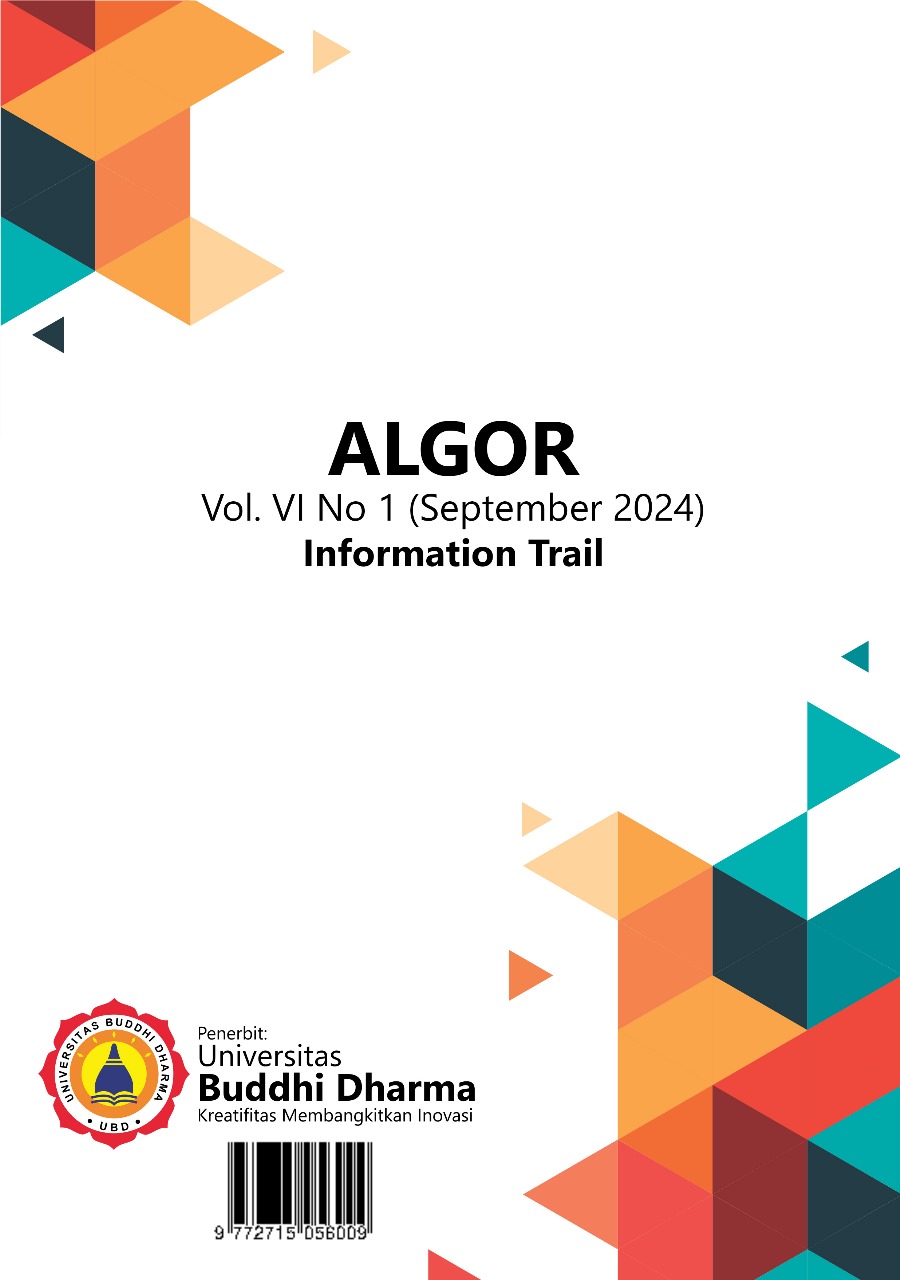RANCANG TEMPAT SAMPAH PINTAR PEMILAH LOGAM DAN NON LOGAM DENGAN METODE METAL PROXIMTIY DAN ARDUINO R3 UNO
DOI:
https://doi.org/10.31253/algor.v6i1.3429Abstract
Manusia menghasilkan sampah dalam aktivitas sehari-hari, yang menjadi masalah besar di masyarakat, terutama di tempat-tempat yang kurang peka terhadap lingkungan. Sampah yang tidak terkelola dengan baik bisa mencemari lingkungan dan merusak ekosistem. Oleh karena itu, dibutuhkan inovasi untuk mempermudah proses pemilahan sampah, seperti pengembangan tempat sampah pemilah otomatis yang dapat memisahkan antara sampah logam dan non-logam secara efisien. Inovasi ini menggunakan Arduino R3 sebagai pusat pengolahan data yang mengatur seluruh sistem. Sensor proximity metal dan infrared digunakan untuk mendeteksi jenis sampah yang dimasukkan ke dalam tempat sampah. Motor servo kemudian digunakan untuk memindahkan sampah ke wadah yang sesuai berdasarkan jenisnya. Selain itu, sensor ultrasonic HC-SR04 berfungsi untuk mendeteksi pergerakan pengguna, sehingga alat ini dapat bekerja secara otomatis saat sampah dimasukkan. Uji coba terhadap alat ini menunjukkan hasil yang cukup baik dengan tingkat keberhasilan mencapai 75%, yang menunjukkan potensi besar untuk diterapkan di lingkungan yang lebih luas dalam rangka mengurangi dampak sampah terhadap lingkungan.
Downloads
Downloads
Published
How to Cite
Issue
Section
License
Copyright (c) 2025 Guesdy Cadrino, Yo Ceng Giap

This work is licensed under a Creative Commons Attribution-NonCommercial-NoDerivatives 4.0 International License.
The Authors submitting a manuscript do so on the understanding that if accepted for publication, the copyright of the article shall be assigned to the journal Algor, Universitas Buddhi Dharma as the publisher of the journal.
Copyright encompasses exclusive rights to reproduce and deliver the article in all forms and media, including reprints, photographs, microfilms, and any other similar reproductions, as well as translations. The reproduction of any part of this journal, its storage in databases, and its transmission by any form or media, such as electronic, electrostatic, and mechanical copies, photocopies, recordings, magnetic media, etc., will be allowed only with written permission from journal Algor.
journal Algor, the Editors, and the Advisory Editorial Board make every effort to ensure that no wrong or misleading data, opinions, or statements be published in the journal. In any way, the contents of the articles and advertisements published in the journal Tech-E, Universitas Buddhi Dharma are the sole and exclusive responsibility of their respective authors and advertisers.







